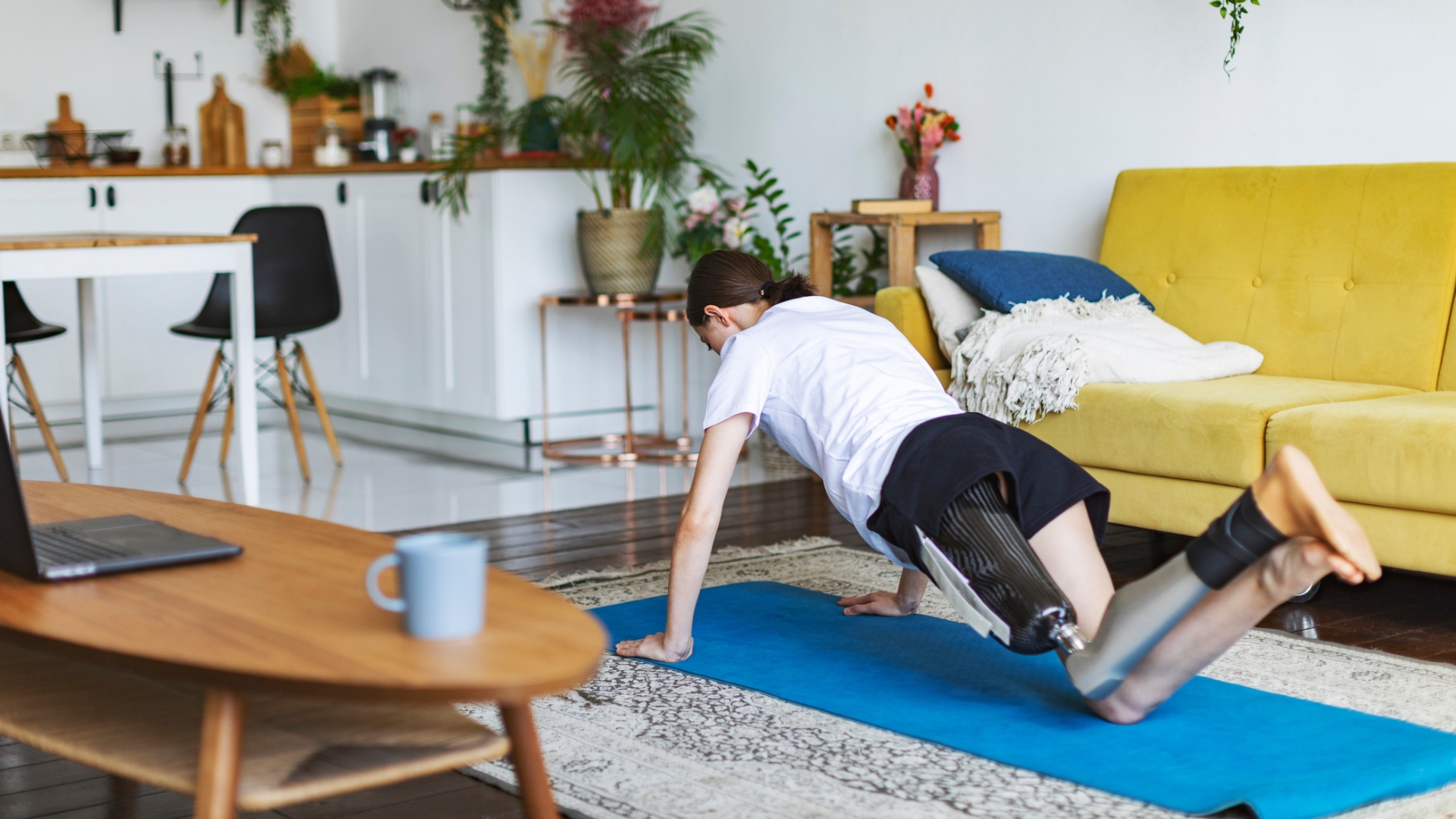This is the best way for beginners to build strength, according to an expert trainer
Start with these moves to build foundational strength


Almost everyone can benefit from strength training. It can improve your posture, support healthy joints, prevent injury and even help with weight management. But, getting started can be confusing, especially with the glut of information online.
To simplify things, I asked Samantha Cubbins, manager of Gymshark’s UK Lifting Club and a trainer with 20 years of experience, where to start.
“I like starting from the middle outward,” says Cubbins. That means encouraging beginners to build core strength, then mastering foundational movement patterns—like pushing, pulling, squatting and hinging at the hips— the building blocks for most exercises.
Here are the moves she recommends focusing on first, along with modifications for beginners or those who haven’t exercised for a while.
Dead bug
Sets: 2-3 Reps: 8-10 each side
- Lie on your back, with your legs raised, knees bent to 90°, your knees directly above your hips and your arms extended straight up.
- Engage your core and press your lower back into the floor.
- Lower one arm behind you and extend and lower the opposite leg so they’re just above the floor.
- Return to your starting position and repeat on the other side.
Cubbins says that this move will engage your whole core, but particularly your transverse abdominis, a muscle deep within your torso that wraps around your midsection. This muscle is responsible for stabilizing your spine and pelvis, so keeping it strong can help you avoid injury.
If you find dead bug challenging, try these beginner-friendly dead bug modifications.
Start your week with achievable workout ideas, health tips and wellbeing advice in your inbox.
Hollow hold
Sets: 2-3 Time: 30sec
- Lie on your back with your legs straight and arms extended behind you, forming a straight line with your body.
- Engage your core and press your lower back into the floor.
- Lift your head, shoulder and arms so they’re just above the floor.
- Raise your legs slightly to engage your upper abdominal muscles and hold for 30 seconds.
If it’s too hard to do this move without arching the lower back, keep your arms by your sides, lifting only your legs. If that’s still too challenging, Cubbins suggests bending one leg.
Like the dead bug, this will activate your mid-body muscles and help you engage them for stability during other exercises.
“Getting the middle part of your body working safely is going to help when you move on to slightly larger, more compound movements,” adds Cubbins.
Push-up
Sets: 3 Reps: 8-10
- Get on your hands and knees, with your hands underneath your shoulders and knees underneath your hips.
- Step your feet back so you’re on your toes with your legs straight, forming a straight line with your body.
- Bend your elbows and lower your chest toward the floor.
- Press through your palms to push back up to straight arms.
Cubbins is an advocate for learning how to move your own bodyweight and a push-up teaches you just that, while working muscles in your chest, shoulders and arms.
This is another challenging exercise. Make it easier by performing a modified push-up, with your hands on a raised surface or dropping to your knees.
Cubbins also suggests performing it with your hands underneath your chest in a narrow position, rather than positioning them out wide—this builds triceps strength, which you need to perform a push-up. It might make the move more challenging but Cubbins says it’s also safer for your shoulders.
Assisted pull-up
Sets: 3 Reps: 8-10
- Step onto an assisted pull-up machine and choose an appropriate counterweight.
- Hold the pull-up bar with an overhand grip, palms facing forward and kneel with your legs on the padded stool.
- Pull your shoulders back and down and engage your core to prepare.
- Drive your elbows down to pull down on the bar and lift your body.
- Pause when your chest reaches the bar.
- Lower with control and repeat.
Pull-ups can strengthen your core and back and improve your posture. Cubbins says they help work the back muscles weakened from excess sitting.
Using an assisted pull-up machine will make the move accessible to beginners, but you could also try doing an inverted row or use a lat pull-down machine to target the same muscles.
Squat
Sets: 3 Reps: 8-10
- Stand with your feet shoulder-width apart and engage your core.
- Bend your knees and push your hips back to lower, keeping your chest upright.
- Pause when your hips are in line with, or lower than, your knees.
- Push through your feet to stand.
Every trainer I speak to says that beginners should master the squat because it’s a movement pattern we do in everyday life—going from sitting to standing.
“It’s full-body movement—although mainly your lower body—so we’re keeping that part of your body safe and moving efficiently,” says Cubbins.
Deadlift
Sets: 3 Reps: 8-10
- Stand with your feet hip-width apart, core engaged and a weight in front of you.
- Keeping a slight bend in your knees, hinge forward at your hips and push your buttocks back and reach down to take hold of the weight with an overhand grip.
- Keeping a flat back throughout, push your hips forward to stand, bringing the weight up to your thighs.
- Reverse the movement to lower the weight to the floor.
This is the other move that every trainer recommends because it targets the posterior chain—the muscles running down the back of your body.
“We pick things up off the floor all the time,” says Cubbins, explaining why she likes to train this move.
“Teaching people the correct hinging pattern with their hips will transfer over to many of the exercises in the gym—even just picking up equipment around the gym safely—or around your house.”

Ruth Gaukrodger is the fitness editor for Fit&Well, responsible for editing articles on everything from fitness trackers to walking shoes. A lot of her time is spent interviewing coaches and fitness experts, getting tips on how to make exercise less intimidating and more accessible.
She's a keen runner and loves strength training. She also enjoys honing her yoga skills from the comfort of her living room.
You must confirm your public display name before commenting
Please logout and then login again, you will then be prompted to enter your display name.





